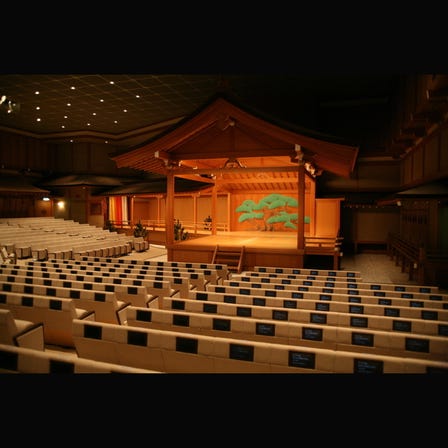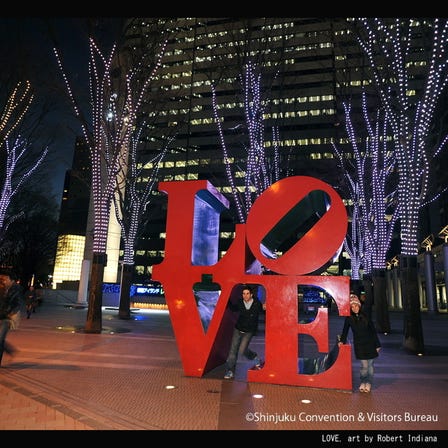
Shinjuku
Shinjuku:Overview & History

Shinjuku Station is a huge labyrinth: more than 3 million people travel through it every single day and more than ten train lines intersect here. With a capacity of over one million commuters at any one time, this is clearly the busiest station in the world. Shinjuku is constantly a bustling, busy town, being a business district in the day and an entertainment district at night. But the area was not always like that. It initially flourished as a post town for travelers, and gradually developed after the railway station was completed after the Meiji period. Nowadays, offices of large companies line the streets in Nishi-Shinjuku, making it a leading business district in Japan. On the other hand, Higashi-Shinjuku and its Kabukicho is a large-scale entertainment district, bustling with life till late into the night.
Shinjuku:Area Introduction
Kabukicho

Kabukicho is one of Tokyo's most famous entertainment and <@nightlife districts|a=article:a000?sc_lid=lj_article_textlink@>. Originally a swamp area known as Tsunohazu, it was notably named in the 1940s for a kabuki theater that was never actually built. Visitors will instead find a veritable urban playground full of restaurants, clubs, bars, movie theaters, internet cafes, and hotels. It's one of, if not the most, wild areas in Japan; a spot where a variety of services are offered to meet a variety of tastes. Truly, Kabukicho is an unquestioned must-visit for anyone going to Tokyo.
Kabukicho’s famed Robot Restaurant has become a defining feature of the stranger side of Tokyo’s nightlife; it’s noisy, colorful, eccentric, and sexy. For many tourists whose expectations of Tokyo involve a noisy, flashing neon spectacle resembling a video game come to life, it is the prime place to go.
At the entrance of the district, don’t miss Don Quijote, a famous shop where you can find various products such as food, cosmetics, and souvenirs at discounted prices.
Another must-see in the area, especially for those interested in Japanese martial arts, is the Samurai Museum. Over fifty swords, helmets, rifles, and suits of armor are on display. Friendly staff is always there to give explanations, and every room offers descriptions of the items on display in English, Chinese, Korean, and of course, Japanese.
Shinjuku East Side

The East Exit of the Shinjuku Station is usually where young people meet in the evening, especially under the big screen of Studio Alta. From there, you cannot miss Shinjuku Road, where popular fashion stores stand in line. If you'd like to buy food as a souvenir, the basement floor of the main building of "Shinjuku Isetan" is recommended. In this famous department store, Japanese tea, sweets made by popular pastry chefs, international liquors, and many souvenirs are available. A few minutes away, don’t miss the Shinjuku Gyoen National Garden, a place that is especially famous in spring, when people come to view the cherry blossoms.
Shinjuku West Side

The west of the Shinjuku district is where the skyscrapers are located, which includes several luxurious hotels like the Hilton Tokyo, but also interesting landmark such as the Tokyo Metropolitan Government Office. The area is also known for the many sightseeing buses departing here. Don’t miss "Tokyo Opera City", a complex with restaurants, concert halls, art galleries, and more. From the observatory restaurant on the 54th floor, you can overlook the town of Shinjuku. Various concerts and exhibitions are held there. Shopping lovers can also have a great time with the Odakyu Department Store, a 14-storey building that carries a large variety of products. A little further away, Yodobashi Camera will answer all your multimedia needs.
Shinjuku:Must-See Events
Late July: Shinjuku Eisa Festival

Eisa is a traditional Bon dance of Okinawa. The dancers are dressed in colorful traditional costumes and show off their powerful movements to the rhythm of drums and cheers. This summer highlight is held around Shinjuku, including Shinjuku Station East Exit’s Station Square, Kabukicho, and Shinjuku Station West Exit.
Mid-November to late February: Shinjuku Terrace City Illuminations

Shinjuku Terrace City, right next to Odakyu Shinjuku Station, is lit up with stunning illuminations during the winter months.
Shinjuku:Access
Access from Narita Airport to Shinjuku
From Narita Airport Station (Terminal 1), take the JR Narita Line Narita Express 20 bound for Shinjuku. After about 1 hour and 19 minutes, get off at Shinjuku Station.
Access from Haneda Airport to Shinjuku
From Haneda Airport International Terminal Station (Keikyu), take the Keikyu Airport Line (Limited Express “Kaitoku”) bound for Aoto. After about 13 minutes, get off at Shinagawa Station and transfer to JR Yamanote Line bound for Shibuya and Shinjuku. After about 19 minutes, get off at Shinjuku Station.
Latest Spot Info
- Coupons
- Events
- Goods
- Appealing
Visiting
Popular Spots
Choice Spots
Eating
Choice Spots
Shopping
Choice Spots
Lodgings
Inspiration for Accommodations
Selected Articles
-
Shinjuku Other Cafes and Sweets Hot Deals
-
Shinjuku Department Stores The Latest
-
Shinjuku Pharmacies Hot Deals













![[In-store sales eligible]10% Tax-Free + Up to 7% OFF Coupon or novelty item](https://rimage.gnst.jp/livejapan.com/public/img/coupon/lj/01/38/lj0138770/lj0138770_692f78fae4d8d_main.jpg?20251203084051&rw=616&rh=616&q=80)

































